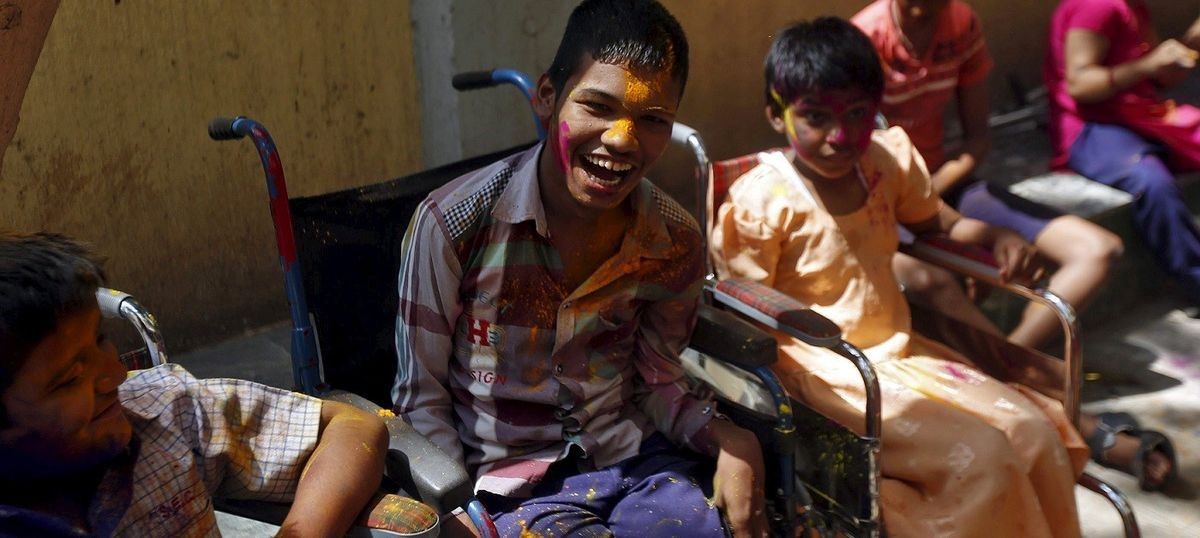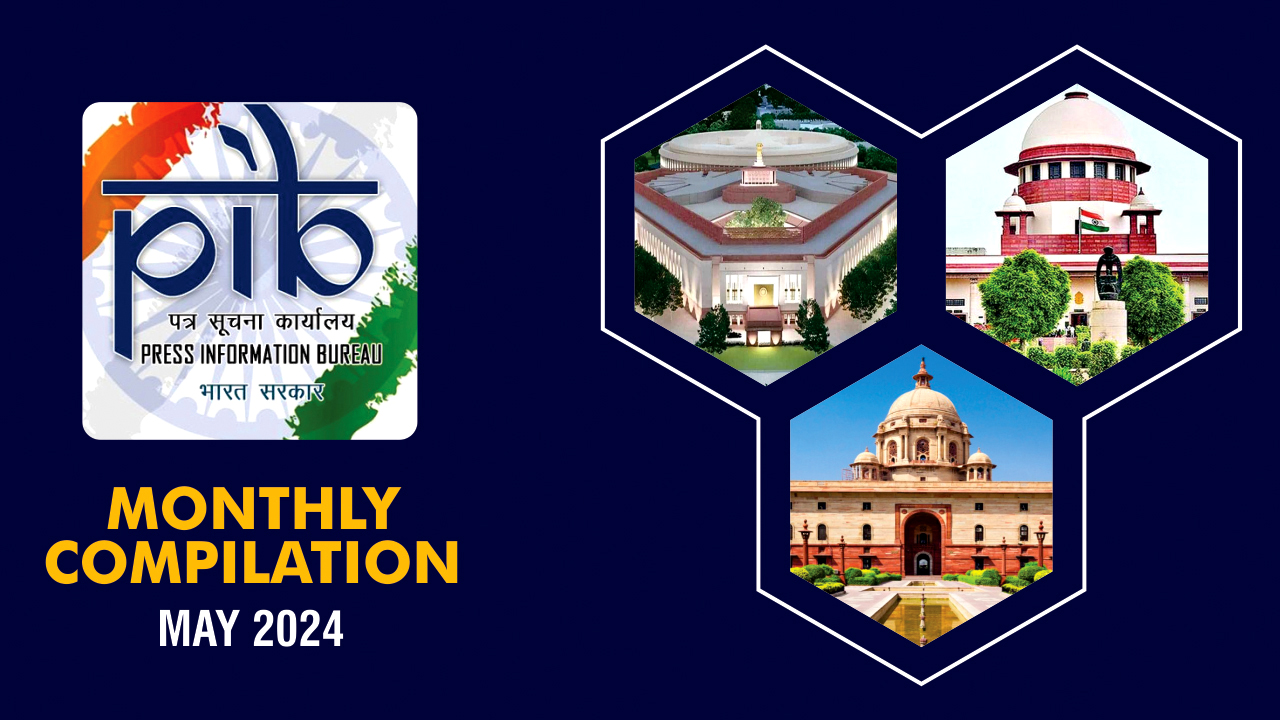
Disclaimer: Copyright infringement not intended.
In News: CPWD's Directive on Accessibility in Public Buildings
- The Central Public Works Department (CPWD) has instructed its regional offices to ensure that all public buildings are accessible to people with disabilities.
- Lifts must have audio announcements and visual displays, and emergency evacuation routes for persons with disabilities (PwD) must be appropriately displayed, with signage in Braille.
Background of India's Disability Law
- The Rights of Persons with Disabilities Act, 2016, gave effect to the United Nations Convention on the Rights of Persons with Disabilities, adopted by the UN General Assembly in December 2006.
- India ratified the convention in 2007, and the 2016 Act replaced The Persons with Disabilities (Equal Opportunity, Protection of Rights and Full Participation) Act, 1995, in April 2017.
Note:
Directive Principles of State Policy (DPSP) and State List:
Article 41 of the DPSP states that the State shall make effective provision for securing the right to work, education, and public assistance in cases of unemployment, old age, sickness, and disablement. The subject of 'relief of the disabled and unemployable' is specified in the state list of the Seventh schedule of the Constitution.
|
Rights of Persons with Disabilities Act, 2016
The Act replaces the Persons with Disabilities (Equal Opportunities, Protection of Rights and Full Participation) Act, 1995. It fulfills the obligations to the United National Convention on the Rights of Persons with Disabilities (UNCRPD), to which India is a signatory.
According to the The Rights of Persons with Disabilities (RPwD) Act, 2016, enacted on 28.12.2016 and came into force from 19.04.2017, Disability has been defined based on an evolving and dynamic concept.
Salient features of the Act
Disabilities covered
- Disability has been defined based on an evolving and dynamic concept.
- The types of disabilities have been increased from existing 7 to 21 and the Central Government will have the power to add more types of disabilities. The 21 disabilities are given below:-

Rights and entitlements
- Responsibility has been cast upon the appropriate governments to take effective measures to ensure that the persons with disabilities enjoy their rights equally with others.
- Additional benefits such as reservation in higher education (not less than 5%), government jobs (not less than 4 %), reservation in allocation of land, poverty alleviation schemes (5% allotment) etc. have been provided for persons with benchmark disabilities and those with high support needs.
- Every child with benchmark disability between the age group of 6 and 18 years shall have the right to free education.
- Government funded educational institutions as well as the government recognized institutions will have to provide inclusive education to the children with disabilities.
- For strengthening the Prime Minister's Accessible India Campaign, stress has been given to ensure accessibility in public buildings (both Government and private) in a prescribed time-frame.
Guardianship
- The Act provides for grant of guardianship by District Court under which there will be joint decision – making between the guardian and the persons with disabilities.
Establishment of Authorities
- Broad based Central & State Advisory Boards on Disability are to be set up to serve as apex policy making bodies at the Central and State level.
- Office of Chief Commissioner of Persons with Disabilities has been strengthened who will now be assisted by 2 Commissioners and an Advisory Committee comprising of not more than 11 members drawn from experts in various disabilities.
- Similarly, the office of State Commissioners of Disabilities has been strengthened who will be assisted by an Advisory Committee comprising of not more than 5 members drawn from experts in various disabilities.
- The Chief Commissioner for Persons with Disabilities and the State Commissioners will act as regulatory bodies and Grievance Redressal agencies and also monitor implementation of the Act.
- District level committees will be constituted by the State Governments to address local concerns of PwDs. Details of their constitution and the functions of such committees would be prescribed by the State Governments in the rules.
- Creation of National and State Fund will be created to provide financial support to the persons with disabilities. The existing National Fund for Persons with Disabilities and the Trust Fund for Empowerment of Persons with Disabilities will be subsumed with the National Fund.
Penalties for offences
- The Act provides for penalties for offences committed against persons with disabilities and also violation of the provisions of the new law.
- Any person who violates provisions of the Act, or any rule or regulation made under it, shall be punishable with imprisonment up to six months and/ or a fine of Rs 10,000, or both. For any subsequent violation, imprisonment of up to two years and/or a fine of Rs 50,000 to Rs five lakh can be awarded.
- Whoever intentionally insults or intimidates a person with disability, or sexually exploits a woman or child with disability, shall be punishable with imprisonment between six months to five years and fine.
- Special Courts will be designated in each district to handle cases concerning violation of rights of PwDs.
|
Mandate for Public Buildings
- Rule 15 of the Rights of Persons with Disabilities Rules, 2017, covers accessibility of physical environment, transport, and information and communication technology.
- Compliance with the standards in the Act, including the harmonized guidelines, is mandatory for all establishments.
- Rule 15 was amended to make compliance with the 2021 harmonised guidelines mandatory.
- The guidelines and standards covered everything from planning and tendering of building projects to specifications for ramps, grab rails, lifts, toilets, and other accessibility features.
- They recommended that universal accessibility should be incorporated in the site planning and detailed working drawings of the project. The guidelines also covered the implementation, evaluation, and maintenance stages.
- All building plans are required to adhere to the guidelines and standards. Existing buildings must be made accessible within five years.

Implementation Status
- CPWD's recent instruction sought compliance with specific provisions in the 2021 guidelines, focusing on audio announcements in lifts and marking evacuation routes for people with disabilities.
- States are yet to incorporate the harmonized guidelines into their building by-laws, despite advocacy by the National Institute of Urban Affairs (NIUA).
Study by Disability Rights India Foundation (DRIF):
- A survey conducted by the Disability Rights India Foundation (DRIF) in 24 States found that more than half have not yet notified State rules for the RPWD Act.
Notification of State Rules:
- Only ten states, including Bihar, Chandigarh, Manipur, Meghalaya, Odisha, Telangana, Tamil Nadu, and West Bengal, have notified the rules
Recognition of Rajasthan:
- Rajasthan was recognized as the best State to implement the Accessible India Campaign on the International Day of Persons with Disabilities (December 3rd).
Accessible India Campaign
- Launched in 2015, the campaign aims to make public buildings, transportation, and websites accessible for PwDs.
- Access audits have been carried out in various buildings, with retrofitting work sanctioned in many, but implementation remains a challenge.
User and Activist Perspectives
- Activists highlight the lack of implementation of both the 2016 and 2021 guidelines, citing issues of awareness, accountability, and budgetary allocation.
- Lack of consistency and monitoring, as well as the need for punitive action, are highlighted as key challenges in ensuring accessibility standards are met.
Way Ahead
- State Rules Notification: States must promptly notify State rules for the RPWD Act to comply with the law.
- Capacity Building: Training for government officials and service providers can improve their understanding of disability rights.
- Awareness Campaigns: Public campaigns can reduce stigma and increase awareness about disability rights and accessibility.
- Monitoring and Evaluation: Regular monitoring can identify implementation gaps and inform policy improvements.
- Collaboration with Civil Society: Working with civil society groups can enhance the Act's implementation and policy formulation.
- Accessible Infrastructure: Enforcing accessibility standards ensures public infrastructure is barrier-free.
- Financial Support: Providing financial assistance can help persons with disabilities access essential services.
- Legal Aid and Support: Offering legal aid services can help persons with disabilities navigate legal challenges
Conclusion
- Despite legislative efforts and guidelines, the implementation of accessibility standards in public buildings remains a challenge in India, requiring greater awareness, accountability, and enforcement mechanisms.
|
United Nations Convention on the Rights of Persons with Disabilities (CRPD)
The United Nations Convention on the Rights of Persons with Disabilities (CRPD) is an international human rights treaty that aims to protect the rights and dignity of persons with disabilities. It was adopted by the United Nations General Assembly in 2006 and entered into force in 2008. The CRPD is based on the principles of non-discrimination, inclusion, full participation, respect for difference, and equality of opportunity.
The convention recognizes that persons with disabilities have the same human rights as everyone else and seeks to ensure their full and equal participation in society. It covers a wide range of rights, including civil and political rights, economic and social rights, and cultural rights. It also recognizes the importance of accessibility, participation in decision-making, and the role of families and communities in supporting persons with disabilities.
The CRPD requires states that are party to the convention to take measures to ensure the rights of persons with disabilities, including through legislation, policies, and programs. It also calls for international cooperation to promote and protect these rights. CRPD has been ratified by 182 countries, making it one of the most widely ratified human rights treaties in the worldTop of Form
|

|
PRACTICE QUESTION
Q. Explain the impact of the Rights of Persons with Disabilities Act, 2016, on persons with disabilities in India. Highlight the major challenges in its implementation and suggest measures to overcome them.
|




